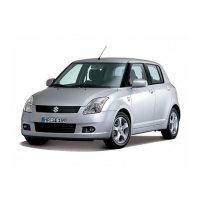Fitted Equipment
NB! Check that the automatic check valve
(N) is open and is allowing air to enter the
heater when it is being drained, and that the
hose (O) is not blocked.
THE HEATING CARTRIDGE
All compact boilers are fitted with one or two
230 V heating cartridges with a maximum
output of either 2100 or 3150 W. Select the
heating cartridge output by sliding the switch
on the control panel to the desired output
position. Always check that the input fuse of
the vehicle has the correct amperage in
relation to the selected output.
1050 W requires a 6-amp fuse.
2100 W requires a 10-amp fuse.
3150 W requires a 16-amp fuse.
THE CIRCULATION PUMP
A 12 V circulation pump is fitted in the
expansion tank. It circulates the heated
glycol fluid in the heating system. Use the
sliding switch on the control panel to start
the circulation pump. The room thermostat
on the control panel controls the circulation
pump, i.e. switches it on or off according to
the amount of heat required. The circulation
pump may also be operated continuously.
(See the control panel section.
Please note that continuous operation of
the 12 V circulation pump considerably
reduces the service life of the motor.
SYSTEM TEMPERATURE
The boiler is set to a system temperature of
80°C, i.e. the temperature of the glycol fluid
as it circulates in the heating system. The
system temperature may be reduced when
required, i.e. if the warm water becomes too
hot.
Lowering the system temperature
Turn the spindle (Q) anti-clockwise. A
quarter turn represents a temperature
reduction of 10°C. To increase the system
temperature, turn the axle clockwise until it
reaches its maximum position and cannot be
turned any further. The system temperature
is then reset to 80°C.
AIR CIRCULATION
In order to achieve the best possible result
from the principle of waterborne heat, it is
important to allow air to circulate freely
under bunks, and behind backrests and
wall-mounted cabinets. If the vehicle has a
fitted carpet, ensure that the carpet does not
obstruct the air supply to the radiators. It is
just as important that cushions or blankets
do no interrupt the flow of air behind
backrests and wall cabinets.
63

